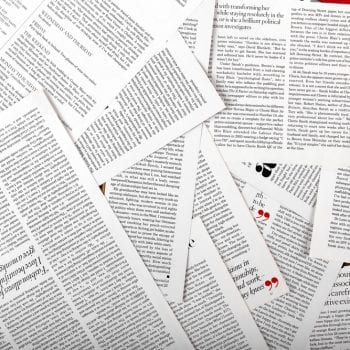
Get It Right Before You Write: Pre-Writing Strategies for Success
Let’s set the scene: You have an incredible idea for a textbook taking shape in your head, you’ve signed a publishing contract with an academic publisher, and your laptop is fully charged. Which means you’re ready to dive in and start writing your textbook, right?
You could do this, but diving right in might result in unneeded frustration and barriers to your creative process. If you invest in a few key pre-writing strategies, you’ll find your writing experience to be more organized, more cohesive, and more likely to meet the goals of your publication. Here are a few pre-writing strategies to ensure you’re prepared to tackle your project.
First step: Clearly identify the audience and purpose of your textbook. What type of course will use this book? What do the students enrolled in the course need from their textbook in order to succeed? What is your book going to accomplish? Is it intended to present a fresh viewpoint, disseminate new research in the field, provide students with an introduction to an academic discipline?
Knowing the answers to these questions will help you determine the appropriate tone and level of your writing. It will ensure your text is reader-friendly, student-centric, and goal-oriented. It will also help you maintain focus and keep the purpose of your textbook top of mind as you work.
Next, research similar textbooks in your discipline and take a look at their tables of contents. This can serve two purposes:
1) to ensure that you are including “must-have” topics within your text—baseline information required within your discipline
2) to determine unique selling points for your text—the topics, pedagogical, approach, etc. that differ from other published titles and will help your book stand out within the academic market
Then, organize your thoughts about what you are going to include in your textbook. The way you approach this step is entirely up to your personal preferences.
If you are detail-oriented, you can create a full outline that includes units, chapters, and topics to guide the development of your manuscript.
If you prefer more flexibility, a general topic list might be more appropriate, and you can discover other key elements of your text as you write your manuscript.
If you aren’t sure how to start, or prefer visual references, you can draw out ideas using pen or paper or using a drawing/organizing program like MindMeister, Trello, or Workflowy. There are lots of free programs online that can help you organize your thoughts and draw connections between main concepts and goals for your text.
Next, consider the high-level structure of your text. Throughout this step, your main focus should be on ways in which you can organize and present your instructional content so that it is clear, accessible, and engaging.
For example, will there be recurring features or pedagogical elements within each chapter or unit? If so, what are they meant to accomplish?
Will the number of chapters align with the number of weeks in an academic term?
How will you ensure that students retain the information you present within the text?
How can you help students actively learn while they are reading? How can you provide them with ample opportunities to practice what they’ve learned and demonstrate their understanding of the content?
The answers to these types of questions can guide your content development and make the process of writing less overwhelming.
Lastly, take a deep breath. Writing a textbook is no small feat, whether you’re editing an anthology or crafting an original work. Create a regular space and time that is conducive to writing and creativity. Divide your large writing project into small tasks and attainable goals so that you feel motivated throughout the process. And if you’re working with a publisher, reach out for help, advice, and support whenever you need it.
After applying these pre-writing strategies, take a seat and power up your laptop. You’re ready to write now that you’re equipped with a clear vision, have some ideas for structure, and you’re dedicated to keeping the student learning experience in mind. A thoughtful pre-writing process will make everything else easier.
Happy writing!




1 Comment